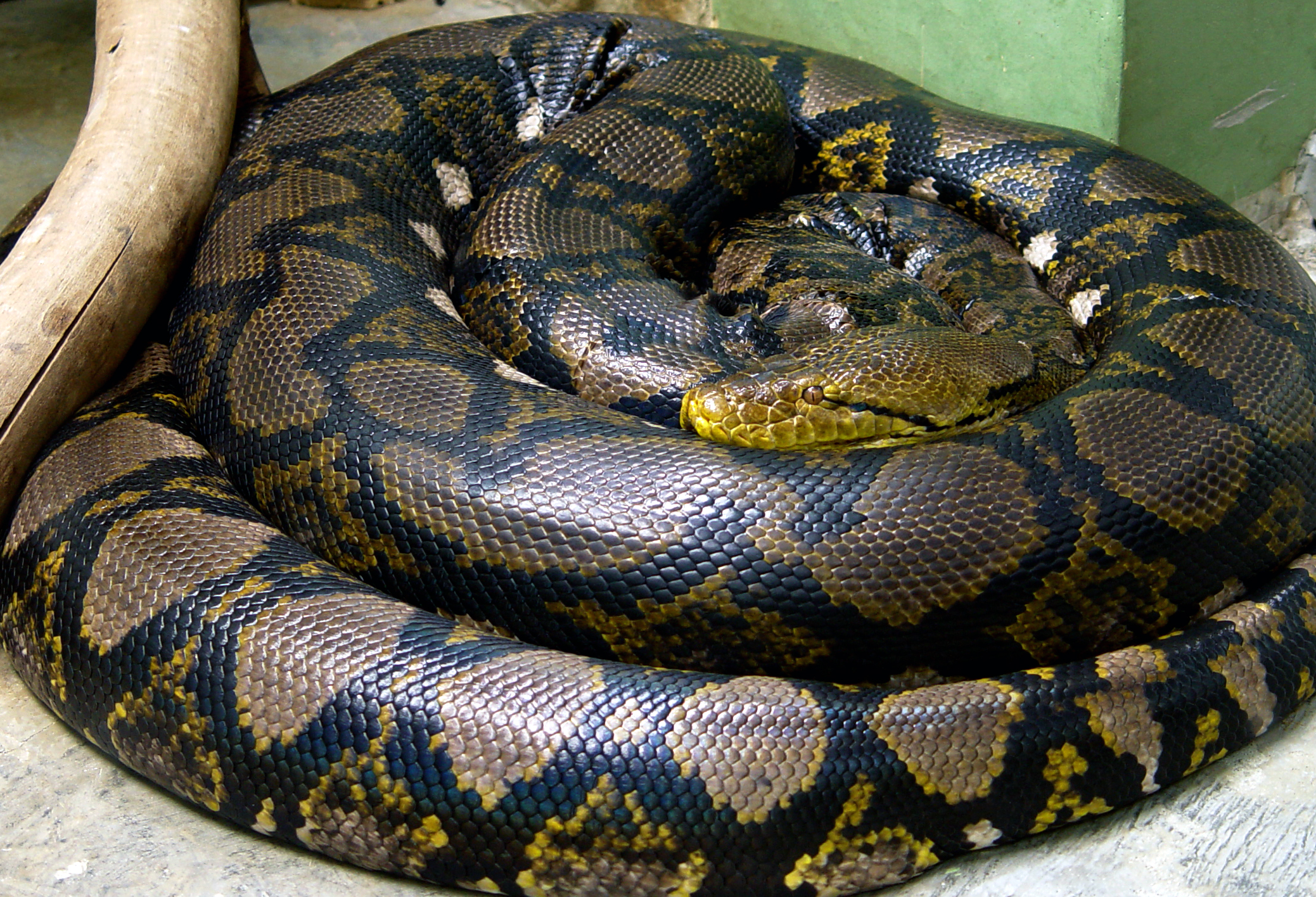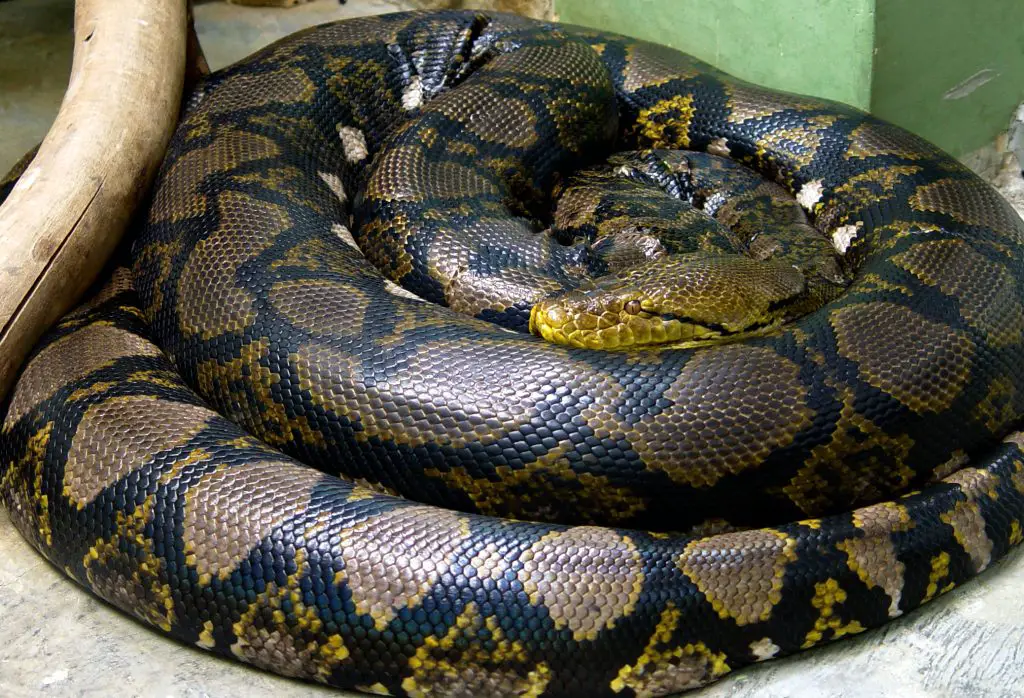Reticulated Pythons are one of the largest snakes in the world, known for their stunning beauty and fascinating behavior. These pythons are native to Southeast Asia and are highly sought after by snake enthusiasts and reptile collectors alike.
With their impressive size and intricate patterns, Reticulated Pythons have captured the attention of people around the globe. But what makes these snakes so unique? In this article, we’ll explore the world of Reticulated Pythons, learning everything from their physical characteristics to their hunting habits. So, let’s dive in and discover the wonders of these magnificent snakes!

What is a Reticulated Python?
Reticulated Python is a species of snake that belongs to the Pythonidae family. They are known for their beautiful patterns and are one of the largest snakes in the world. The scientific name of Reticulated Python is Python reticulatus. These snakes are native to Southeast Asia and are commonly found in the rainforests, grasslands, and swamps of the region.
Physical Characteristics
Reticulated Pythons are known for their impressive size. They can grow up to 30 feet long and can weigh up to 250 pounds. These snakes are usually tan or brown in color and are covered in intricate, diamond-shaped patterns. The patterns on their backs are usually black, brown, or yellow, while their bellies are white or cream-colored.
Reticulated Pythons have a triangular-shaped head and a muscular body. They have heat-sensing pits on their upper lips that help them detect warm-blooded prey. These snakes have sharp teeth that they use to grab and hold onto their prey.
Habitat and Diet
Reticulated Pythons are native to Southeast Asia and can be found in countries like Indonesia, Malaysia, and Thailand. These snakes are excellent swimmers and can be found in rivers and swamps. They are also found in rainforests and grasslands.
Reticulated Pythons are carnivorous and primarily feed on small mammals like rodents, birds, and reptiles. They are also known to prey on larger animals like deer and pigs.
Behavior and Temperament
Reticulated Pythons are solitary animals and are usually only seen together during the breeding season. They are nocturnal and spend their days sleeping in trees or hiding in burrows. These snakes are excellent climbers and are known to climb trees to catch prey.
Reticulated Pythons are not venomous, but they are powerful constrictors. They wrap their muscular bodies around their prey and squeeze until it suffocates. These snakes have been known to attack humans, but they usually only do so when they feel threatened.
Benefits of Reticulated Pythons
Reticulated Pythons play an important role in their ecosystem. They help to control the populations of small mammals like rodents and birds, which can become pests if left unchecked. These snakes are also important prey for larger predators like eagles and crocodiles.
In addition to their ecological benefits, Reticulated Pythons are also popular pets. They are intelligent animals that can be trained to recognize their owners and respond to simple commands. However, owning a Reticulated Python requires a lot of responsibility and knowledge about their care.
Challenges of Owning a Reticulated Python
While Reticulated Pythons can make great pets, they also come with a lot of challenges. These snakes require specific temperatures and humidity levels to thrive, which can be difficult to maintain in a home environment. They also require a large enclosure, as they can grow up to 30 feet long.
Another challenge of owning a Reticulated Python is their diet. These snakes require a steady supply of live rodents or other small mammals, which can be expensive and difficult to source.
Reticulated Python vs. Other Snakes
Reticulated Pythons are often compared to other large snake species like the Burmese Python and the Anaconda. While all of these snakes are large and powerful, there are some key differences.
Burmese Pythons are native to Southeast Asia and are similar in size to Reticulated Pythons. However, Burmese Pythons have a more docile temperament and are easier to handle than their Reticulated counterparts.
Anacondas, on the other hand, are native to South America and are much larger than Reticulated Pythons. While they are also constrictors, Anacondas are known for their aggressive behavior and are not recommended as pets.
Conservation Status
Reticulated Pythons are currently listed as a species of “least concern” by the International Union for Conservation of Nature (IUCN). However, their populations are threatened by habitat loss and poaching for their skin and meat.
It is important to support conservation efforts to protect these snakes and their habitats. This can include supporting organizations that work to protect rainforests and other natural habitats, as well as advocating for responsible pet ownership and breeding practices.
In Conclusion
Reticulated Pythons are fascinating creatures that play an important role in their ecosystem. They are powerful predators and can make great pets for experienced owners. However, owning a Reticulated Python requires a lot of responsibility and knowledge about their care. By supporting conservation efforts and responsible pet ownership, we can help to ensure that these beautiful snakes continue to thrive in their natural habitats.
Frequently Asked Questions
What is a Reticulated Python?
A Reticulated Python is a species of python that is native to the rainforests of Southeast Asia. It is one of the largest snakes in the world, with some individuals reaching lengths of over 30 feet. The reticulated python is a non-venomous snake that kills its prey by constriction.
Reticulated pythons have a distinctive pattern on their skin that often resembles a net or a grid, hence the name “reticulated.” Their skin is typically brown or green with yellow or white markings. These snakes are known for their strength, agility, and intelligence, and are often kept as exotic pets.
Where do Reticulated Pythons live?
Reticulated Pythons are native to Southeast Asia, including Indonesia, Malaysia, and the Philippines. They are typically found in rainforests, but can also be found in grasslands and swamps. These snakes are able to adapt to a variety of environments, which has helped them to become one of the most widespread python species in the world.
In addition to their native range, Reticulated Pythons have been introduced to other parts of the world, including the United States and Australia. In some areas, they have become invasive and pose a threat to local wildlife.
What do Reticulated Pythons eat?
Reticulated Pythons are carnivorous and feed primarily on small mammals and birds. Their diet may include rodents, monkeys, deer, and wild pigs. These snakes are ambush predators and will lie in wait for their prey to come within striking distance. Once they have captured their prey, they will constrict it until it suffocates.
Reticulated Pythons are capable of consuming prey that is much larger than their own bodies. After a large meal, they may not eat again for several weeks or even months while they digest their food.
Are Reticulated Pythons dangerous?
Reticulated Pythons are powerful snakes and can be dangerous to humans. Although they are not venomous, their large size and strength make them capable of inflicting serious injuries. Attacks on humans are rare, but can occur if the snake feels threatened or cornered.
In addition to their potential danger to humans, Reticulated Pythons can also pose a threat to local wildlife. In areas where they have been introduced, they may prey on native species and disrupt local ecosystems.
Can Reticulated Pythons be kept as pets?
Reticulated Pythons are often kept as exotic pets, but they require a high level of care and should only be kept by experienced reptile owners. These snakes can grow to be very large and require a lot of space. They also have specific temperature and humidity requirements that must be met in order for them to thrive.
Keeping a Reticulated Python as a pet is not legal in all areas, so it is important to check local regulations before purchasing one. Additionally, it is important to research the specific care requirements of these snakes and to only purchase them from reputable breeders.
🟢What is a Reticulated Python?
In conclusion, a reticulated python is an incredibly fascinating and powerful creature. Its unique patterns and size make it a popular choice for both experienced and novice snake enthusiasts alike. With proper care and attention, these snakes can live long and healthy lives, bringing joy and wonder to those lucky enough to interact with them.
While it’s important to remember that reticulated pythons are not for everyone, those who are willing to put in the time and effort to care for one will be rewarded with an incredible companion. Whether you’re interested in their impressive size, striking appearance, or simply drawn to their mysterious nature, there’s no denying that reticulated pythons are a captivating species that commands respect and admiration.
So if you’re considering adding a reticulated python to your collection, remember to do your research and ensure that you’re fully equipped to provide the care and attention that these incredible creatures require. With the right approach, a reticulated python can be a truly rewarding addition to any home.


